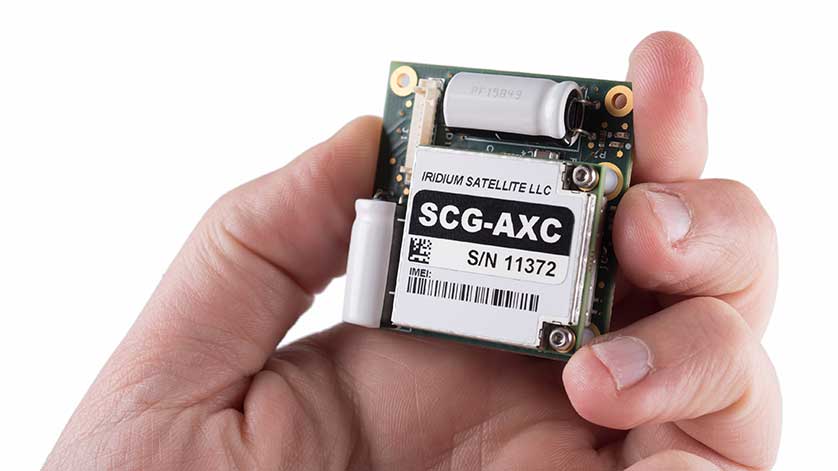The Ocean Cleanup Simulates Garbage by Satcom

Not for the first time – nor, one sadly suspects, the last – today’s innovators, policy-makers and citizenry alike are picking up the bill for the interrelated naïveté and short-termism of previous generations. Among the most sobering truths which have permeated the collective consciousness in the 21st century is the fact that our oceans have become overly polluted with plastic.
It’s not just that plastic is strangling sea life and collecting in enormous, swirling patches the size of small countries: more covertly, tiny microplastics are also abundant in the water, making their way back into the food chain and ultimately onto our plates. Astonishingly, inexcusably, more than five trillion pieces of plastic currently litter the world’s oceans.
The unthinkable scale of the problem has generated a widespread fear that we may have left it altogether too late to develop a conscience about it, let alone a strategy to fight it. But the good news is that moves are already afoot to coax the planet back from the brink of a gargantuan ecological end-game caused by ocean plastic. Admittedly, cleaning up plastic from the world’s oceans is a far from straightforward process technically, while persuading governments to make a commitment to funding large-scale, eco-friendly measures is challenging to say the least.
Ingenious and economical
Thankfully, the minds behind The Ocean Cleanup foundation have devised an ingenious – and, crucially, economical – solution by designing a system which uses nature to help collect the plastic garbage floating in the ocean. The system consists of a 600m-long, U-shaped floater, with a 3m-deep skirt beneath it, that travels along the water’s surface. It utilizes perpetual wind and wave energy to carry the floater along at a speed marginally faster than the ocean current (and, therefore, that of the plastic just below the surface).
The effect is akin to having a giant, water-borne plastic catcher scouring the ocean, collecting everything from massive discarded fishing nets all the way down to centimeter-sized plastic. The plastic garbage is rounded up by the curved floater, making it easier for collection by boats every few months. According to The Ocean Cleanup, “it is estimated that a full-scale deployment of our systems will clean up to 50% of the Great Pacific Garbage Patch every 5 years from full-scale deployment.”
Satcom and simulation
Of course, with such long-term deployments envisioned, performance of the system will need to be closely monitored. For initial testing, and in service thereafter, a small, ruggedized Iridium satellite terminal, RockBLOCK from Rock Seven, will be put to work in a number of open-source, current-driven drifting buoys which will be deployed to simulate plastic movement around the systems.
These ‘marker buoys will incorporate the compact 9603 RockBLOCK plug-and-play tracking device, interfaced with an Arduino-based microcontroller. With an Iridium 9603 modem at its heart, the RockBLOCK features an integrated antenna, and exposes the modem’s serial interface via a breakout connector over serial.
“A set of tests are planned during the entire operation around our System 001,” says The Ocean Cleanup computational modeller Benedicte Dommergues, “which will include several measurement campaigns over the next six months to a year. In one test, we will release the drifters in the vicinity of the system and let them drift for a period of time before being recovered. During this time, their trajectories will be recorded and sent to the cloud via satellite. The objective is to utilise them for as long as possible.”
Data including everything from battery status to the buoys’ location and velocity will be transmitted to the provider’s cloud, using Rock Seven’s POST functionality to populate a database. Data from this database will consequently be downloadable via an API (application programming interface): it can then be processed on board through a Python script and visualised by means of a Power BI GUI (graphical user interface) depicting the drifters and barrier.
Improving performance
The cleanup system has been engineered to be sea life-friendly and to withstand the punishing ocean environment. The systems will be deployed in areas that see hardly any marine traffic, although the position of each system will be known and subsequently avoided by vessels.
“The buoy data, correlated to metocean conditions, and updated plastic transport models will allow us to determine if modifications to the system would improve its plastic collection performance,” Dommergues continues. “Some of the buoys are also equipped with a gyroscope that may enable us to derive some wave data from the motion of the buoys. This data will be compared to the findings obtained by other means, including a dedicated wave drifter buoy and the Autonaut R.O.V.”
On September 8, 2018, The Ocean Cleanup’s System 001 was launched from the foundation’s assembly yard in Alameda and towed through the San Francisco Bay toward the infamous Great Pacific Garbage Patch. The event was broadcast live on The Ocean Cleanup’s website.
Principled projects such as The Ocean Cleanup, bolstered by the input of forward-thinking technological entities such as Rock Seven, go a very long way in restoring a vital commonsense balance. As an exemplary precedent for the future, combining sophisticated data capture techniques derived from evolving satellite technology with the processes of the natural world is surely the practical way to go.

